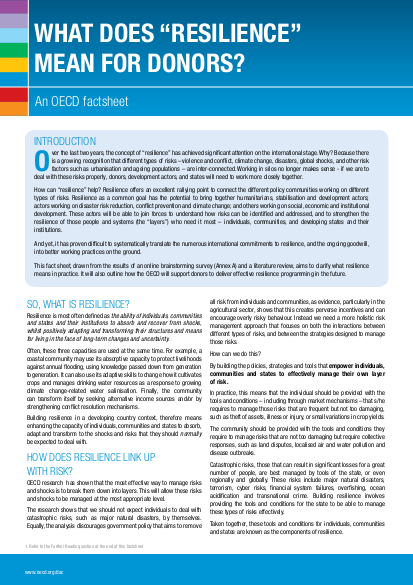
Over the last two years, the concept of “resilience” has achieved significant attention on the international stage. Why? Because there is a growing recognition that different types of risks – violence and conflict, climate change, disasters, global shocks, and other risk factors such as urbanisation and ageing populations – are inter-connected. Working in silos no longer makes sense - if we are to deal with these risks properly, donors, development actors, and states will need to work more closely together. How can “resilience” help? Resilience offers an excellent rallying point to connect the different policy communities working on different types of risks. Resilience as a common goal has the potential to bring together humanitarians, stabilisation and development actors; actors working on disaster risk reduction, conflict prevention and climate change; and others working on social, economic and institutional development. These actors will be able to join forces to understand how risks can be identified and addressed, and to strengthen the resilience of those people and systems (the “layers”) who need it most – individuals, communities, and developing states and their institutions.
